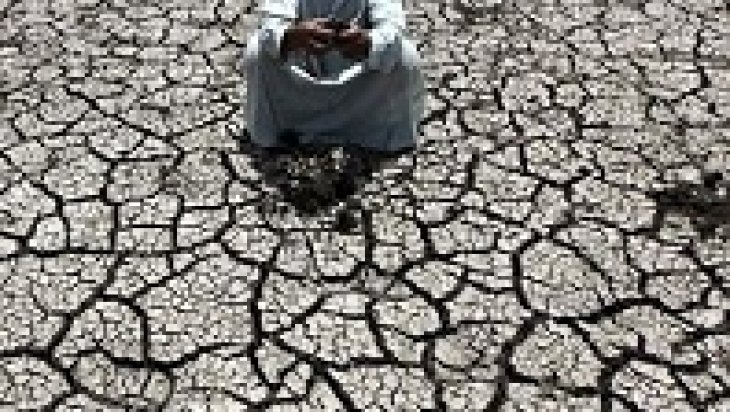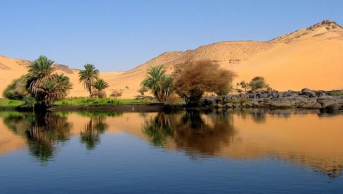The Water Problem in Pakistan: A Country Running Dry

With its 182 million people -which continues to rise rapidly- over a territory of approximately 797 thousand square kilometers, Pakistan is among the most populous countries in the world. Along with its great number of challenges in a wide range of issues, it is now increasingly becoming a seriously water-stressed country.
Per capita water availability, the most important criterion of water stress is quite indicative: The figure dropped from 5000 cubicmeters in 1950s to less than 1400 by 2010. Furthermore, it has been projected that it will be less than 1000 cubicmeters by as early as 2020. It has been reported by WaterAid, a global water charity organization, that over 93 million people don't have access to adequate sanitation in Pakistan, with 15 million have to collect dirty water from unsafe sources. In rural areas the situation is worse: two out of three people lack sanitation, according to “Charity: Water”. More than 600 children are dying from water-borne diarrhea, daily.
According to common view in Pakistan, the country’s water problems really started in 1960 when the country agreed to give headwaters of Jhelum, Ravi and Suthluj, the three significant watercourses of Pakistan, under Indian control. From then on, India has become the scapegoat, diverting much of Pakistani waters into its massive network of reservoirs. Nevertheless, in reality, according the Indus Waters Treaty of 1960, Pakistan is entitled to almost all the waters of the three western rivers of the Indus system. India, on the other hand, enjoys use of the remaining tributaries. Therefore, there is not much to blame on transboundary dimension.
Another externality is the phenomenon of climate change: The Indus River Basin which is the main watercourse in Pakistan is basically a snowfed river system in the upper Himalayas and rainfed through the western Himalayas. There is an alarming pace of glacier melting which is expected to significantly reduce the river flow in the 21st century. However, Pakistan did little to change its water fate. As of early 2010s, nearly 85% of water is being used in highly inefficient agriculture sector. Not only the irrigation systems are far from being water efficient, but also poor drainage systems have contributed to reductions in yields due to increasing salinization. Pakistan was not able to modernize its irrigation schemes and methods, nor it did try to decrease its economy’s dependency on agriculture. Currently, about 25 percent of Pakistan’s GDP comes from agriculture.
The population surge is one of the reasons for the drop in per capita water availability. Population figures in many cities of Pakistan doubled in less than three decades. For instance, Lahore’s population doubled from nearly 3.5 million to 7 million in the period between1980 to 2005. It should be noted that Lahore, the second biggest city in Pakistan is heavily dependent on groundwater, which is currently being depleted at rate well beyond the natural rate of replenishment. This trend is visible in many other urban centers, causing inability of governmental authorities to meet with the rising demands for water, lion share of which has already been captured by electorally strong agriculture. Overall, the country’s populations was below 83 million in 1980. In three and a half decades, it reached to nearly 183 million. An additional 100 million people, in essence, means 10 billion litres of additional water per day, just for basic sanitation purposes.
Another problem is environmental in nature. Pakistan was unable to protect its invaluable Indus delta due to heavy water use in agriculture. This poses risks to whole Indus river system. Loss of biodiversity reached very serious levels: For instance, the mangrove forests in the Indus Delta have declined from 263,000 hectares in 1977 to mere 106,000 in 2003, in less than three decades, according to a World Bank report in 2005. Not to mention the water quality: most of water sources utilized in urban centers are intensively polluted. Heavy metals such as lead, chromium and cadmium are commonly found in waters flowing through water infrastructures in cities. Arsenic levels in Lahore’s groundwaters are well beyond permissible levels in nearly all sampling points.
In view of these challenges, a number of recommendations have been made for Pakistani water management. Let me recap: Instead of building big water infrastructure intended for increasing the supply -which is in dire straits- Pakistan should focus more on the repairs of the existing water distribution networks as well as extension of modern irrigation technologies. A new balance should be sought between needs of agriculture and pressures of the urban centers. Efficiency in both areas is a must. Empowering the local, and empowering the individual will make the country’s water management more efficient in many ways, as well as more accountable. A special emphasis should be given to women, which appear to be critical in water use practices in both rural and urban areas. Promoting private sector involvement will also help to ease the burden of the public authorities.









